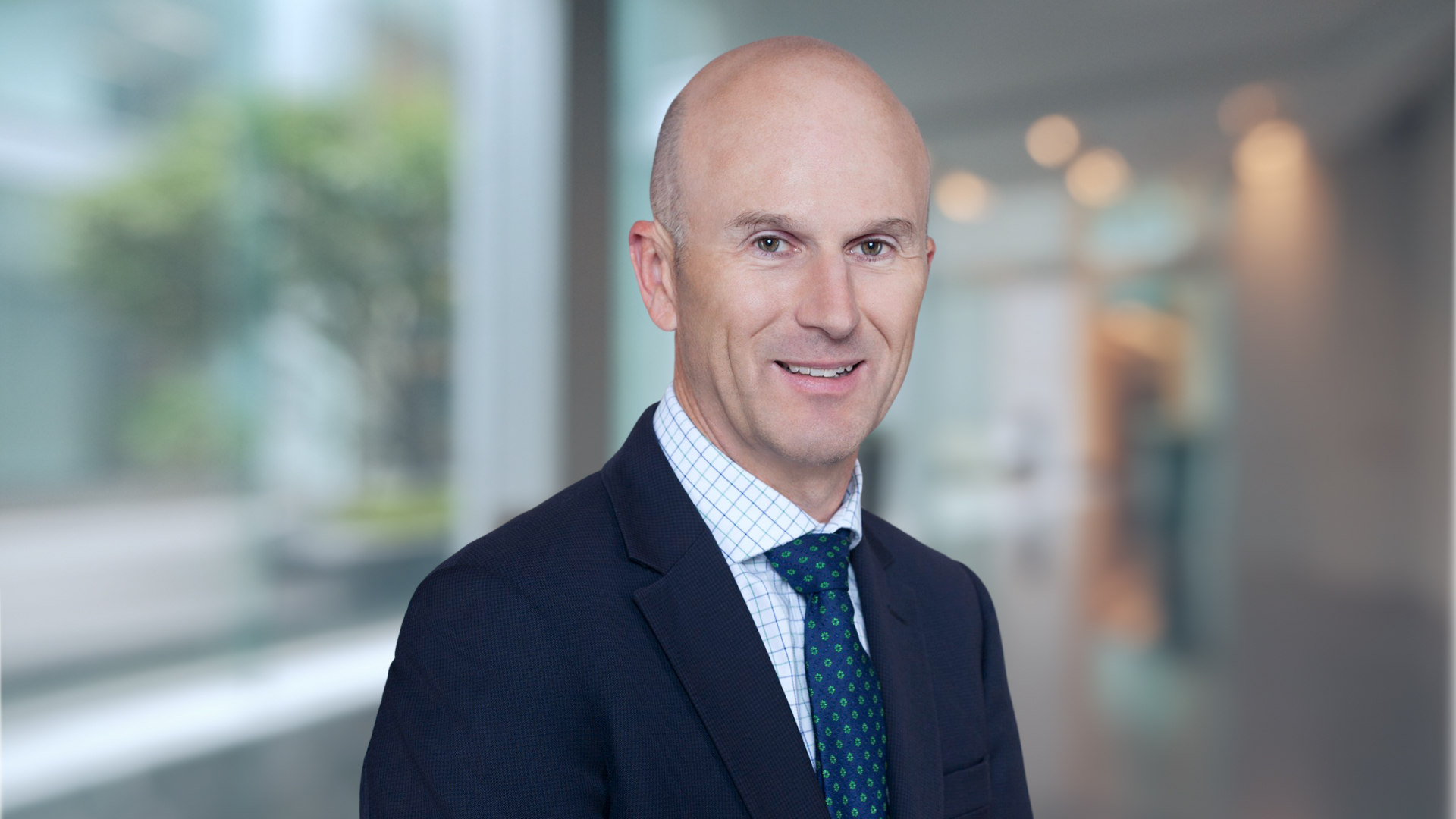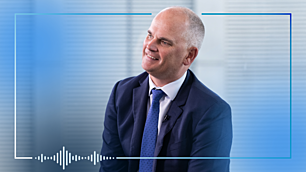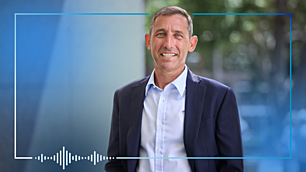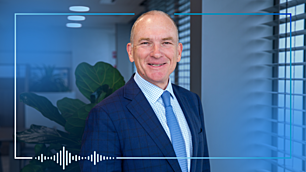Simon Conn’s guide to surviving the small cap 'torture chamber'

The professional investment game is relentless. No matter where you are in the world, you cannot escape the endless procession of markets. Sure, you can go on holiday and attempt the concept of relaxation, but each morning when you wake up, Wall Street has just closed. It’s impossible not to sneak a peek. Each month, your numbers are measured against the market and your peers. There is no hiding.
After 27 years and more than 50 reporting seasons, one of the mainstays of the Australian share market, IML’s Simon Conn, is stepping aside for a well-earned break. It might be permanent. It might be a refresh. Only time will tell.
Conn joined IML back in 1998 - teaming up with market legend and past guest Anton Tagliaferro. Before long, Conn found himself overseeing the tough end of town - small caps.
In those 27 years, he has seen the rise of the internet, the smartphone, the GFC, COVID, and now the AI revolution. Through all of that, investors like Conn have been told it’s a new world. Concepts like ARR, PCV and the Rule of 40 have taken hold, while old measures like PE ratios have been pushed aside for revenue multiples.
Meanwhile, the Small Ords index has underperformed for decades. It all sounds like a torture chamber, but somehow Conn has come through it, delivering 12% annual returns for more than two and a half decades.
In this episode of Success and More Interesting Stuff, Conn shares the lessons he learned over his career and how he adapted his approach as markets evolved over the past three decades.
Interview transcript highlights selected by a Livewire editor with the assistance of AI.
A career built on protecting the downside (14:59)
Simon Conn cut his teeth in the volatile world of small caps, where preserving capital is as important as generating returns. One of the key strengths he developed at IML was navigating drawdowns with discipline and a focus on quality.
“What we did very well at IML was protect the downside for investors. And I think if you look at our history, it was in those volatile down markets where we really earned our stripes because the portfolios would hold up" said Conn.
He points to competitive advantage as a critical filter, businesses with clear economic moats, not just flash-in-the-pan potential.
“You’re always thinking about what is the competitive advantage and how much pricing power does this company have. Which is why I’ve always been very cautious on resources or the contractors… It only takes one contract to blow the business up.”
Management is make or break in small caps (17:20)
For Conn, backing the right people is just as important as picking the right businesses, especially in the small-cap space, where leadership can materially shape outcomes.
“You’ve got to be able to trust the people and understand the motivations that drive them. I mean, the people who run NAB and CBA and Telstra don’t have a huge impact on the business, but the CEO of a small company can make and break so much wealth.”
He shared his experience investing in Generation Life, driven by a belief in its leadership pairing - Rob Coombs and Grant Hackett.
“I was lucky enough to be an investor because I backed Rob when I saw him on the board. And then he hired Grant. And I go, 'Oh my God, you’ve hired Grant Hackett. What does he know about business?' And you talk to Rob and you go, well, the guy’s driven, he’s been very successful, he’s very disciplined. He’s also had some setbacks in his life, and he’s learned from that, and he’s going to be a great CEO. And the two of them made a great team.”
Chairman, he adds, can often be the unsung heroes.
“It’s the chairman’s role in this mentorship role that can actually be a great oversight and help create wealth.”
Adapting to changing markets (24:04)
Conn acknowledges that the investing playbook has changed. Value investors now operate in a world where market structure and sentiment can outweigh traditional fundamentals.
“People say there’s the death of value investing. But you’re always going to have corrections and recessions, and then fundamentals will matter more. It’s cyclical, but there’s also a big structural element now.”
He described how his thinking evolved around zero-marginal-cost businesses, such as REA Group (ASX:REA), Carsales (ASX:CAR), and Promedicus (ASX:PME).
“What I worked out was that these were very high gross margin, or if not zero marginal cost businesses, where a dollar of revenue was straight to the bottom line. In that environment, revenue becomes important… market cap to sales, those ratios are significant.”
Yet he remains sceptical of extreme valuations.
“The price on Promedicus? It’s nosebleed, it’s crazy. I can’t get the valuation to stack up, but it keeps putting out good news, and that news flow drives bots, index buying, and sentiment.”
He’s also quick to remind listeners of the risk.
“Appen was a great example. The stock was flying high… then the work for Facebook and Google fell away, and the stock collapsed. The cycle of technology is getting shorter and that’s what we’re seeing with AI.”
On finding companies with defensible earnings - is it harder? (29:23)
Despite changing market dynamics, Conn believes good companies are still out there.
“If you look hard enough, you can still find good businesses. If you look at the portfolio before I left, we had no trouble filling it with good quality stocks, and our returns in 2023 and 2024 were strong.”
He believes themes can distort valuation temporarily, but quality tends to reassert over time.
“The market becomes very thematic. We had the EV metal boom - everyone was buying the lithium names - and a lot of the stocks we owned looked very cheap. Eventually, people gravitated back and we had good years of returns.”
Opportunity from Index Funds (31:31)
Passive flows have changed the game, but Conn sees opportunity in the parts of the market that get overlooked.
“If you can do the work, get out on the road, visit companies, talk to people - you can find really interesting, hardworking people who still build good businesses.”
He also raised concerns about financial transparency, particularly with companies using alternative accounting metrics to paint a rosier picture.
“Life360 (ASX:360) tells everyone they’re cashflow positive, but they’re issuing a lot of stock to staff. That’s positive in the cashflow, which would normally be negative.”
His preference is for simplicity and clarity in numbers.
“I don’t spend a huge amount of time worrying about businesses like Life360. The valuation looks full, and it hasn’t been generating cash. I can find existing businesses that make money in Australia that are more attractive - like ReadyTech and HiPages.”
He notes a broader issue with standards.
“There’s a huge amount of anomalies in the P&L. People look at the cashflows, and if you’re a high gross margin business, grow your revenue and you’ll grow your profit, and that drives share prices.”
Lessons from structural change (34:15)
Not every headwind is cyclical. Conn recalls frustrating periods where monetisation didn’t match audience numbers, particularly in radio.
“You could see the ratings and you knew everyone was listening, but they couldn’t monetise it.”
His experience with Chorus (ASX:CNU) in New Zealand showed how regulatory surprises can derail even well-reasoned investments.
“We thought we were buying into a regulated revenue stream… and then we got this bizarre regulatory decision slashing the return on their copper assets. We spent a lot of time in Wellington, writing letters to the regulator, explaining that they were going to bankrupt the business. Eventually, we got a good outcome, but it took time.”
His advice? Don’t assume common sense will prevail.
“Just because it’s common sense doesn’t mean politicians and regulators are going to give you a common sense outcome.”
On activist investing and engaging with Boards (37:06)
Conn views activism as a responsibility when the thesis is sound but the execution is failing.
“If you buy into a stock and it disappoints, and it’s an issue that can be addressed by management or the board, I’ll actively get involved.”
He recalled a defining moment from the Lion Nathan days when IML challenged a questionable acquisition.
“Anton put a half-full can of Diet Coke in front of Gordon Cairns. Gordon asked, ‘What’s this?’ Anton said, ‘Well, you like paying full price for half-full things, so you can have that.”
He also shared how persistence at Quantium (an IP firm) that knocked back a bid from IPH Limited.
“Eventually, the chair changed. The new chair was engaged and took copious notes. The business got taken out for $1.73, after trading sub one dollar. It turned out to be a great recovery story.”
Ultimately, he believes backing disruptors has become easier than trying to reform incumbents.
“Culture is key. It’s almost easier now to start a disruptive business than to back the incumbent and hope they’ll disrupt themselves.”
On current market conditions (45:12)
Conn sees elevated valuations and rising cost pressures as the key tension in today’s market.
“Valuations look pretty stretched. The market’s had a huge run - but all the costs of business continue to go up, and top lines aren’t growing at the same rate.”
He also sees regulatory creep weighing on businesses, particularly in Australia.
“We’ve got a very left-wing government, and wages are growing. Insurance costs, regulation - everything is going up. Politicians want to regulate everything.”
Still, he acknowledges Australia’s structural strengths.
“We’re a massive landmass, small population, in the middle of the fastest-growing region in the world. That’s what’s underpinned no recession since 1991.”
Looking ahead, he sees a market buoyed by liquidity - but warns there’s a lot already priced in.
“There’s a lot of money around and people want to put it to work. But there’s a lot in the price for a lot of stocks.”
Current Ideas: Resilient healthcare plays (47:15)
Simon Conn highlighted two healthcare stocks he continues to like, Australian Clinical Labs (ASX: ACL) and Integral Diagnostics (ASX: IDX).
While both posted softer-than-expected half-year results, he believes they remain high-quality, resilient businesses. His thesis rests on the structural tailwinds in healthcare, including population growth and technological advancements in radiology and pathology, which enable more sophisticated testing and drive long-term demand.
“They had soft updates at the half, but I think both are very solid, resilient businesses… and healthcare is a very resilient sector.”
More episodes



1 topic
2 stocks mentioned
1 contributor mentioned


